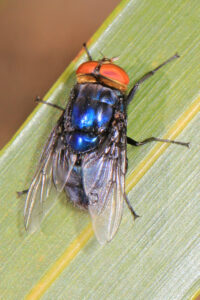New World Screwworm- Updates and NCDA&CS State Vet’s Office Webinar
go.ncsu.edu/readext?1081556
en Español / em Português
El inglés es el idioma de control de esta página. En la medida en que haya algún conflicto entre la traducción al inglés y la traducción, el inglés prevalece.
Al hacer clic en el enlace de traducción se activa un servicio de traducción gratuito para convertir la página al español. Al igual que con cualquier traducción por Internet, la conversión no es sensible al contexto y puede que no traduzca el texto en su significado original. NC State Extension no garantiza la exactitud del texto traducido. Por favor, tenga en cuenta que algunas aplicaciones y/o servicios pueden no funcionar como se espera cuando se traducen.
Português
Inglês é o idioma de controle desta página. Na medida que haja algum conflito entre o texto original em Inglês e a tradução, o Inglês prevalece.
Ao clicar no link de tradução, um serviço gratuito de tradução será ativado para converter a página para o Português. Como em qualquer tradução pela internet, a conversão não é sensivel ao contexto e pode não ocorrer a tradução para o significado orginal. O serviço de Extensão da Carolina do Norte (NC State Extension) não garante a exatidão do texto traduzido. Por favor, observe que algumas funções ou serviços podem não funcionar como esperado após a tradução.
English
English is the controlling language of this page. To the extent there is any conflict between the English text and the translation, English controls.
Clicking on the translation link activates a free translation service to convert the page to Spanish. As with any Internet translation, the conversion is not context-sensitive and may not translate the text to its original meaning. NC State Extension does not guarantee the accuracy of the translated text. Please note that some applications and/or services may not function as expected when translated.
Collapse ▲The New World Screwworm (NWS), Cochliomyia hominivorax, is a devastating parasite primarily affecting warm-blooded animals, including livestock, wildlife, pets, and, in rare cases, humans. Unlike most maggots that feed on decaying tissue, NWS larvae consume living flesh, burrowing deep into wounds and causing severe damage, secondary infections, and often death if left untreated. Historically, this pest caused significant economic losses to the U.S. livestock industry.
The United States successfully eradicated the New World Screwworm in 1966 through a cooperative effort led by the U.S. Department of Agriculture (USDA), primarily utilizing the Sterile Insect Technique (SIT). This method involves releasing radiation-sterilized male flies that mate with wild female flies, leading to unfertilized eggs and a subsequent decline in the screwworm population. For decades, a biological barrier maintained by the USDA in Panama prevented the pest’s northward migration. However, recent detections of NWS in Mexico, close to the U.S. border, have heightened concerns, prompting renewed vigilance and strategic actions from U.S. agricultural agencies.
Both the USDA and the North Carolina Department of Agriculture & Consumer Services (NCDA&CS) emphasize the critical importance of early detection and reporting to prevent the re-establishment of NWS in the United States. They urge veterinarians, livestock producers, and the public to be vigilant for any signs of screwworm infestation, such as maggots in wounds, irritated animal behavior, head shaking, or a foul odor from wounds. Prompt reporting to state animal health officials or USDA veterinarians is crucial for immediate response and containment efforts, safeguarding animal health and the agricultural economy.
Here are some reference pages from the USDA and NCDA&CS:
- New World Screwworm – USDA APHIS:
- New World Screwworm – NC Department of Agriculture:



